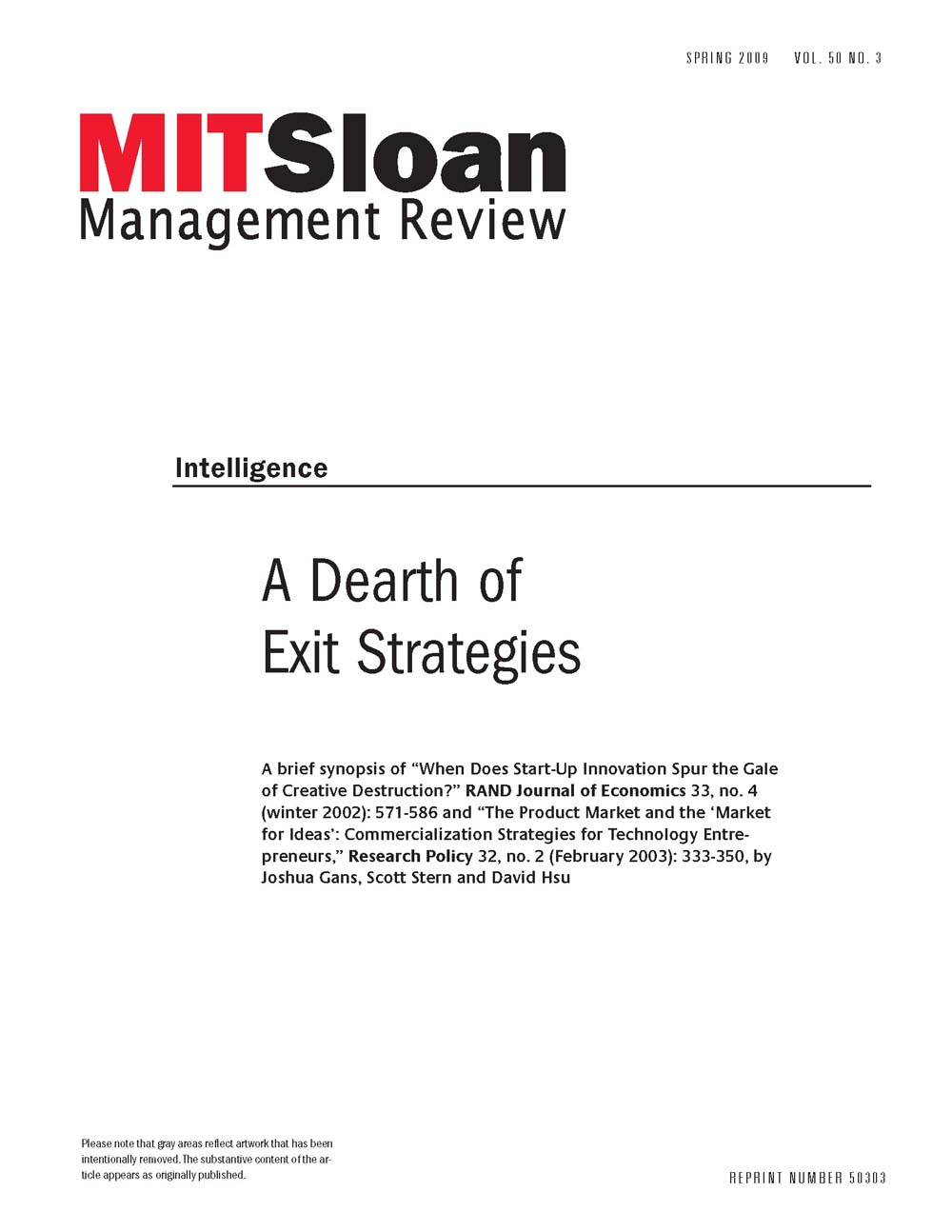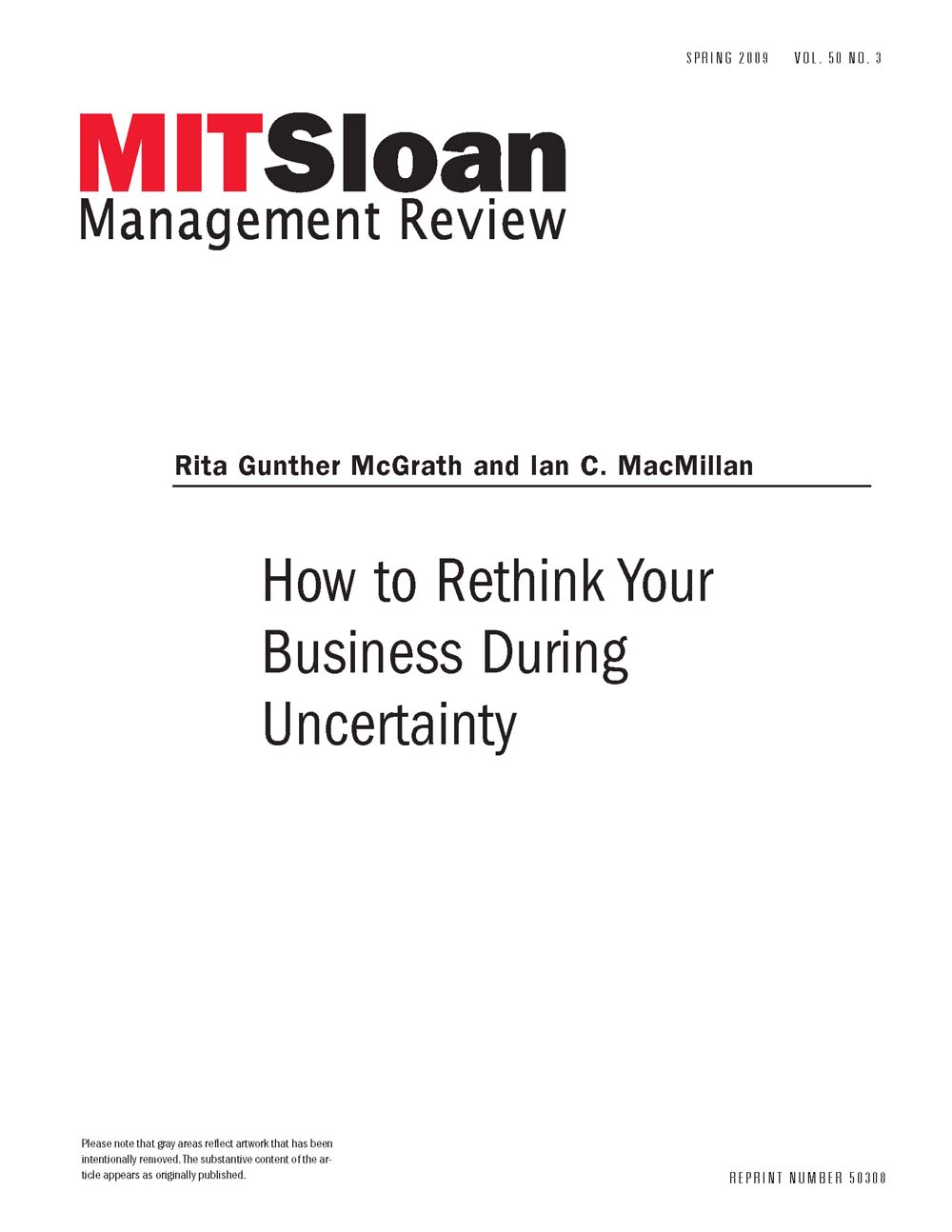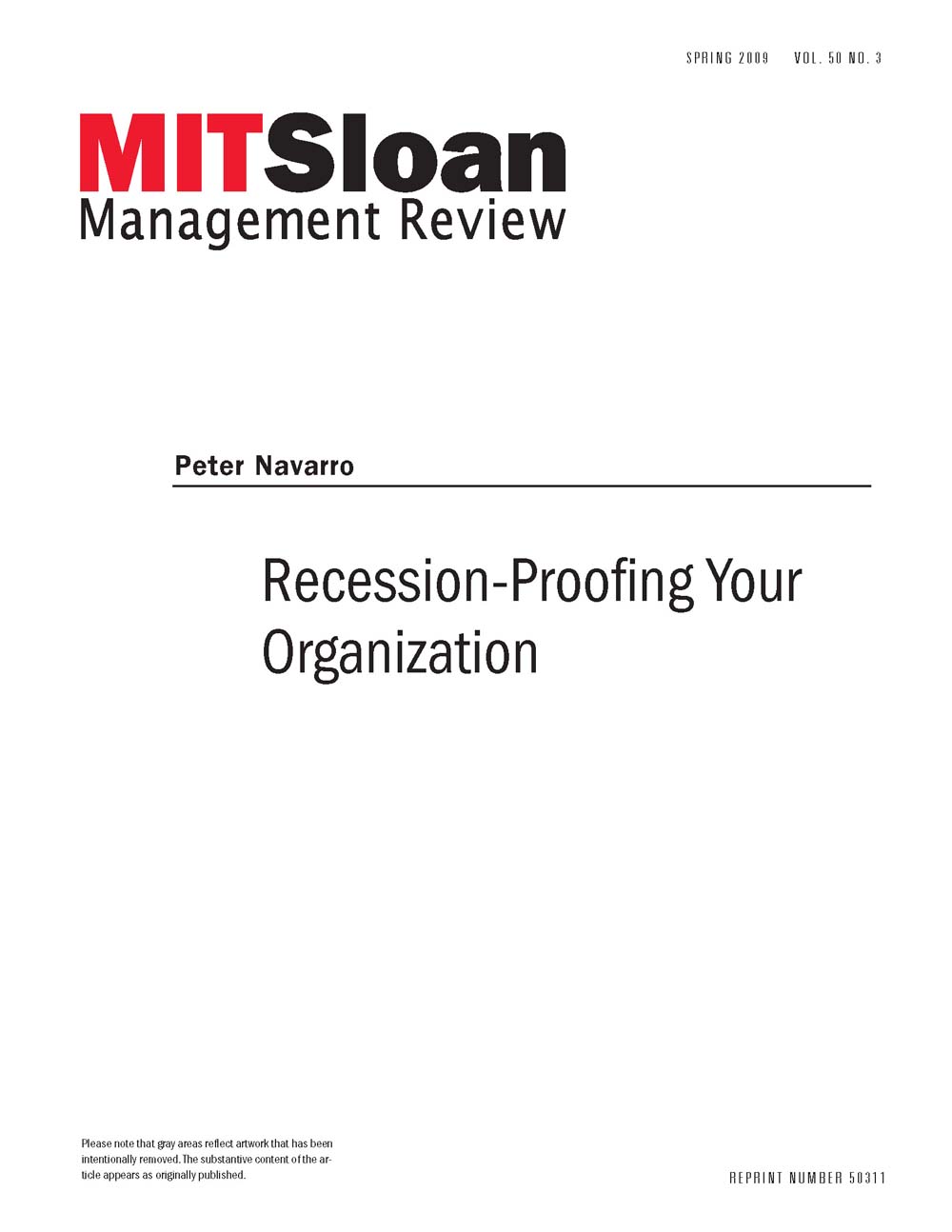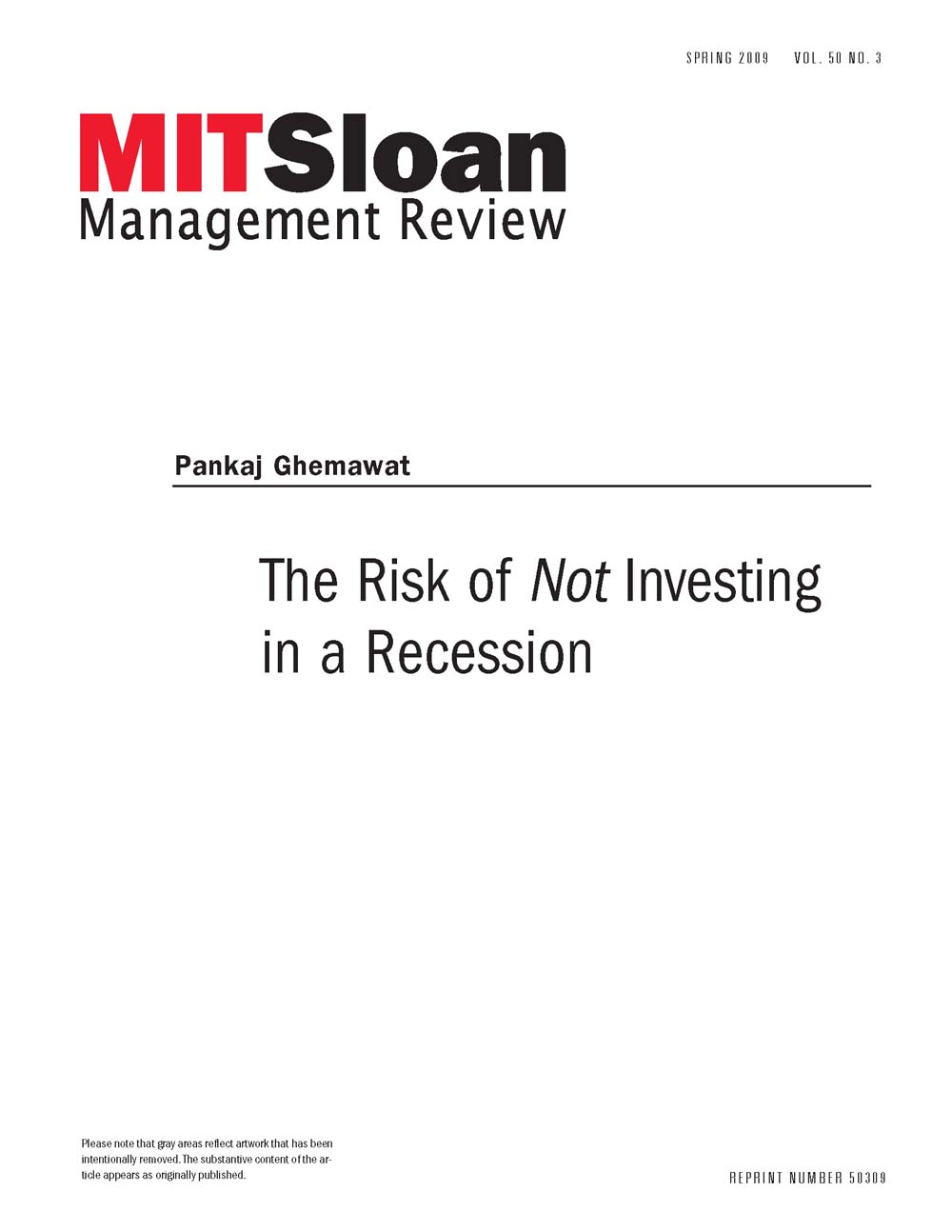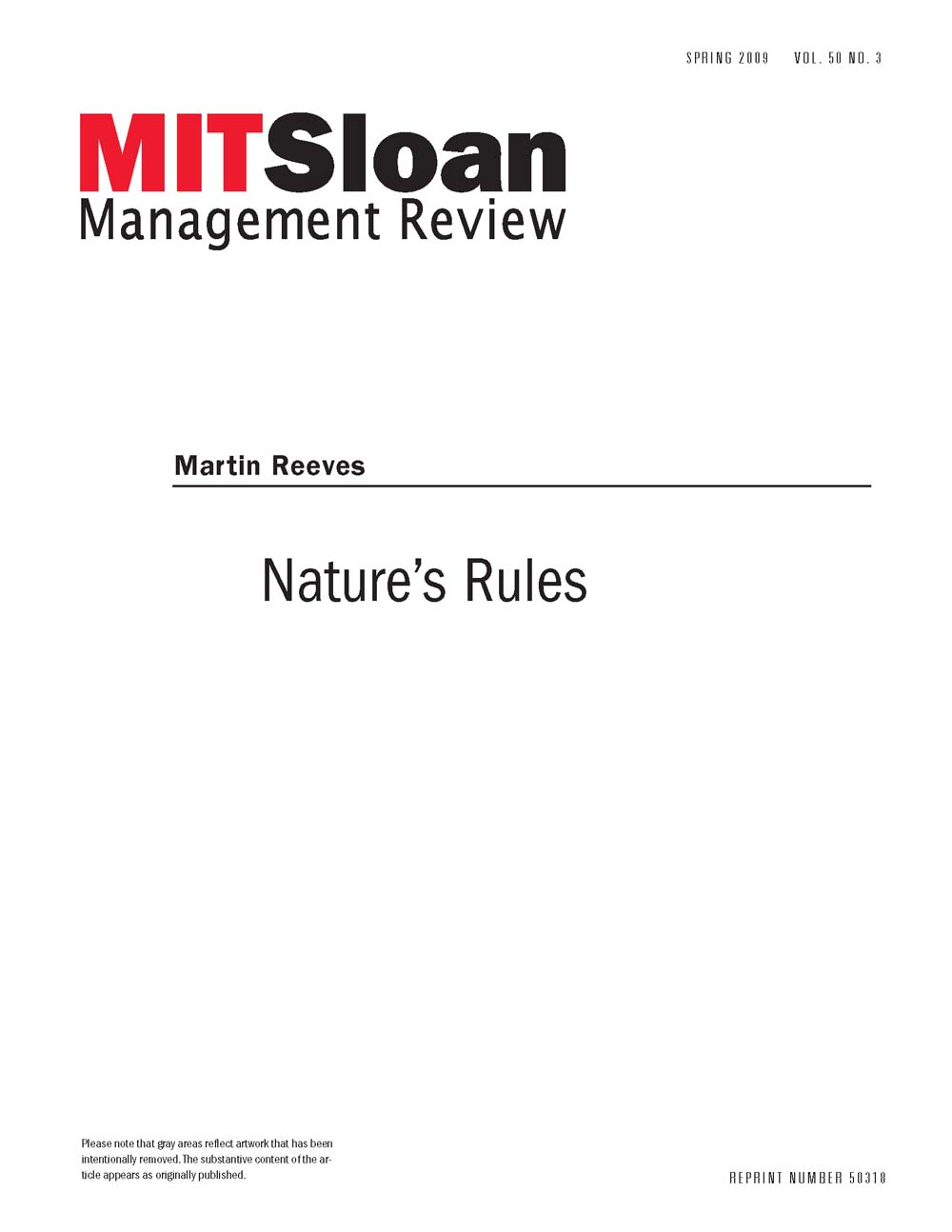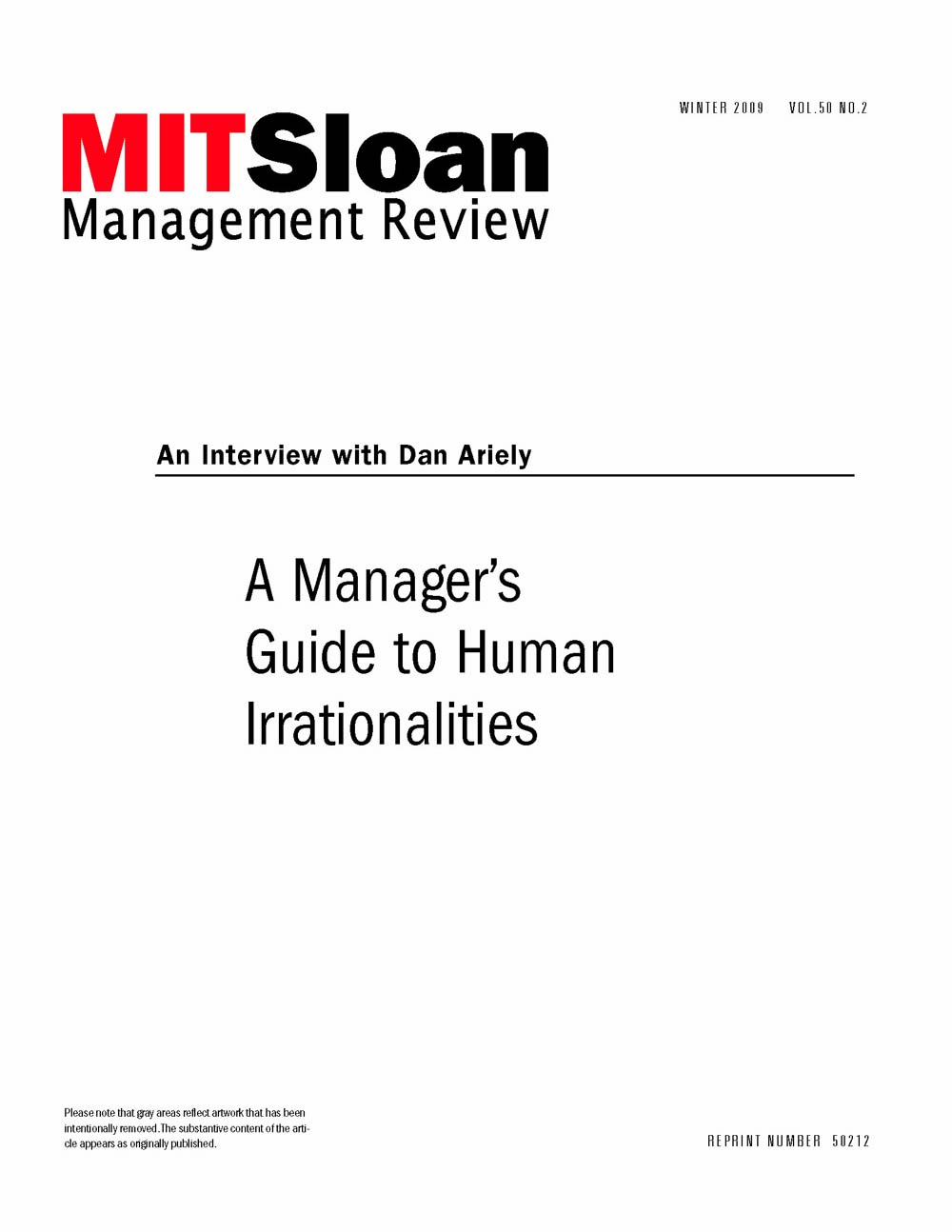Fallout from the financial crisis could hinder innovation—by limiting options for technology start-ups.
Strategy
Page 33 of 52
-
How to Rethink Your Business During Uncertainty
Leaders of many of today's mature organizations don't have the right mind-set or practices to help their organizations survive. They grew up with management practices that are suited to a different age--one with higher barriers to entry, greater transaction costs, fewer capable competitors, growing and increasingly affluent markets and less information. But today's business environments are less predictable, more complicated and more volatile. The result is that many core businesses are themselves becoming more uncertain and in need of renewal. Established management tools, such as net present value, are built on a foundation of assumed certainty that it's realistic to forecast likely cash flows into the future and discount them to today. In volatile business environments, though, such thinking is no longer practical. As an alternative, the authors offer practices used by successful growth companies, entrepreneurs and corporate new-business-development groups to navigate unpredictable, resource-constrained and surprising environments. In an unpredictable world, trying to be right can lead managers terribly astray. The "discovery-driven" approach outlined in this article emphasizes finding the right answers and reducing the assumption-to-knowledge ratio.
-
Recession-Proofing Your Organization
In his 2004 MIT Sloan Management Review article “Principles of the Master Cyclist,” the author made the case for why companies need to learn how to integrate strategic business-cycle management into their tool kits. The article presented a set of principles that savvy managers can use in making tactical decisions (in areas such as inventory management, marketing and pricing) and strategic decisions (in areas such as capital expansion and mergers and acquisitions). At the time of publication, there was a growing perception that the business cycle had largely been “tamed” by the sophisticated application of discretionary fiscal and monetary policies. However, that myth has since been completely shattered–not just by the 2008-2009 recession but also by the U.S. Federal Reserve System’s role in formulating the economic policies that helped trigger the crash. In this current article, the author discusses the heightened importance of economic and financial market literacy and how smart forecasting can help companies manage the business cycle more effectively than their competitors. The author highlights three major activities managers need to focus on: (1) developing and deploying forecasting capabilities to anticipate movements and key turning points in the business cycle, (2) applying well-timed business-cycle management strategies and tactics across the functional areas of the organization in a synergistic and integrative fashion, and (3) building an organization with a business cycle orientation, a facilitative structure and a supportive culture.
-
The Risk of Not Investing in a Recession
Two very different ways of thinking about investment and risk are in competition. One emphasizes the financial risk of investing; the other concerns the competitive risk of not investing. In normal times, the bearishness of the former tends to complement the bullishness of the latter. But during extremes in the business cycle, the author argues, the balance between the two can break down. Specifically, companies seem to overemphasize the financial risk of investing at the bottom of the business cycle, at the expense of the competitive risk of not investing. This is dangerous, in the author’s view, because it can create a lasting competitive disadvantage. Using examples from the semiconductor, paper and diamond industries, the author argues that it doesn’t make sense to stamp out either financial or competitive risk, even though financial risk could be eliminated by investing not at all and competitive risk could be eliminated by investing indiscriminately. Instead, managers need to strike a balance between the errors implicit in these two types of risk: the error of pursuing too many unprofitable investment opportunities as opposed to the error of passing up too many potentially profitable ones. The original version of this article was published in the Sloan Management Review in Winter 1993. In this updated version, the author expands his views in light of the 2008 economic downturn.
-
Nature's Rules
The rules of nature can help you succeed in adversity, but they can also steer you wrong.
-
-
A Manager’s Guide to Human Irrationalities
People aren’t stupid "Ò they just often act that way. Noted behavioral economist Dan Ariely explains what that should mean for strategists.
-
How Boards Can Be Better — a Manifesto
Managers and directors alike face tough choices as they decide on the quality and quantity of information that the board receives and uses in its governance and fiduciary roles. As the fallout from recent crises such as the subprime mortgage debacle illustrates, both sides must address the problem of “information asymmetry” & #8212; the gap between the information available to management and to the board. The authors’ research suggests that tomorrow’s boardroom will be reshaped by three related forces: First, they face a thorough rethinking, brought on by concerned stakeholders, of directors’ information needs. In responding to these pressures, boards and management must overcome several impediments: caution about altering the dynamics of the present manager-director relationship; directors’ lack of needed skills for interpreting the new information; and the inertia of cultural norms. Second, they face dramatic improvements in the performance assessment approaches used to guide boards’ decision making. The core of a healthy information relationship between managers and directors is their agreement on the most useful performance metrics to track and assess. This selection enables the building of trust and an eased and more pertinent workload for the board (having been freed from the need to decode reams of data while also gaining some independence from management’s sometimes self-serving evaluations). Finally, boards and managers face the adoption of technologies that support critical board functions. Once access to such information is granted, new technologies can help directors obtain and use it. Board members may apply tools that, for example, enable improved visualizations and helpful alerts. And directors may engage in electronic “what-if” analyses, using company data as well as outside information & #8212; related, say, to competing firms & #8212; which is becoming increasingly available online.
-
Innovating Our Way to a Meltdown
To understand the financial crisis, view it as a systems accident.
-
Profiles of Trust: Who to Turn To, and for What
Although top managers must project an image of professionalism and strength, they still require networks of individuals they can trust. The development of trust depends on the degree to which the executives perceive the presence of three critical attributes & #8212; ability, benevolence and integrity & #8212; within their support networks, and on their ability to match these qualities with the type of support they are seeking in any particular situation. We model the support being sought as having high or low informational complexity and high or low emotional demand. The combinations correspond to four types of support requested: raw information (low, low), actionable advice (high, low), emotional support (low, high), and strategic or political help (high, high). Meanwhile, the three critical attributes (each with either a high or low rating) translate into eight kinds of support providers: Trustworthy Partner, Harsh Truthteller, Moral Compass, Loyal Supporter, Star Player, Average Joe, Dealmaker and Cheerleader. Executives in need of actionable advice will most often turn to Trustworthy Partners or Harsh Truthtellers, given their high levels of ability and integrity. For strategic or political help, Trustworthy Partners will be sought because of their high levels of ability, benevolence and integrity. Seekers of emotional support will look to Loyal Supporters and Trustworthy Partners because they offer high levels of benevolence and integrity. And when the three facets of trust are less critical, executives will be willing to go to virtually any of their contacts for raw information, though most often they seek out Average Joes. These and other matches were observed, useful data was gathered and valuable insights were obtained when we tested our model on vice presidents, directors, general managers and other executives at a Fortune 50 technology firm.



